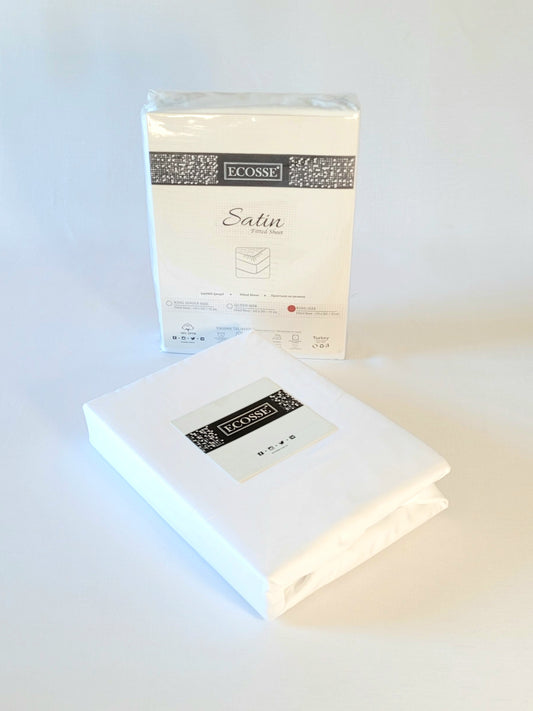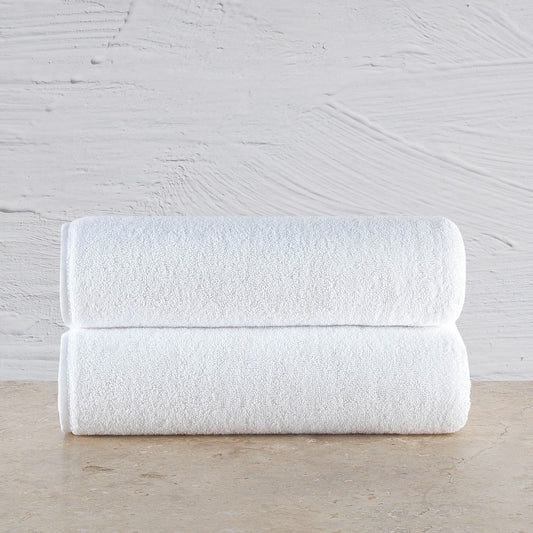Maintaining a regular schedule for changing your bed linen, including duvet covers, bedsheets, and pillowcases, is crucial. Just like taking a shower and brushing your teeth, timely bedding set change is an important hygiene practice. Considering the amount of time we spend in bed and the direct contact our skin has with them, it's essential to prioritize the cleanliness of our bedding.
Why You Should Change Your Bedding More Frequently
Our bodies constantly produce sweat and sebum, which can lead to the growth of bacteria and microorganisms on bedding. Dirt, dust, traces of cosmetics, and sweat can accumulate on sheets.
Often, people do not change their bedding in a timely manner because they are unaware of how important it is for their health. Unclean duvet covers, bed sheets, and pillowcases can become a breeding ground for mold, fungi, bacteria, and dust mites. Сonsequences of this can include allergies, characterized by sneezing, nasal congestion, watery eyes, and swelling. In some cases, it can even lead to asthma, dermatitis, eczema, and acute viral illnesses. In addition to the health risks, there is also the psychological aspect to consider, as sleeping on fresh, pleasantly scented bedding is much more enjoyable.
Fresh, clean sheets contribute to a more comfortable and restful sleep, allowing you to wake up feeling rejuvenated and ready to tackle the day.
Uninvited Occupants in Our Bed

Our beds can harbor a multitude of microorganisms and insects. For instance, dust mites that spread allergens. Mattresses and pillows can house microbes, including bacteria, viruses, and fungi, which can lead to various diseases. Choosing the right materials and regularly changing bed linen can help eliminate them.
We ourselves are sources of bacteria and microbes, particularly during illness. The warm temperature in the bedroom contributes to the proliferation of microorganisms. Therefore, it is important to ventilate the room and avoid overheating.
Fungus

In bedding, a fungal infection can occur due to several reasons. One of them is poor hygiene and improper care of bed linen. If bed sheets are not regularly changed and washed at a sufficiently high temperature, fungi can remain on them and continue to multiply. Additionally, the moist and warm environment in the bed can create favorable conditions for the growth and spread of fungi.
Fungal infection can be transmitted from person to person through direct contact or through contaminated objects, including bedding. Therefore, it is important to maintain good hygiene, regularly change and launder bed linen to prevent the possibility of fungal infection in the bed.
Dust Mites

Dust mites - are microscopic organisms. They are common inhabitants of the household environment, especially in bedding, mattresses, pillows, and upholstered furniture. Dust mites feed on organic waste, such as dead skin cells from humans and animals.
These microscopic creatures can cause problems for people with allergies or asthma, and can also trigger reactions in sensitive individuals, including itching, nasal congestion, sneezing, difficulty breathing, and other symptoms.
Dealing with dust mites involves regular and thorough cleaning of bedding, regular ventilation and drying of mattresses and pillows, as well as the use of hypoallergenic covers on mattresses and pillows.
Bacteria

Various microorganisms, such as staphylococci, streptococci, and Gram-negative bacteria, can inhabit bedding. Some of them are natural inhabitants of our skin and pose no threat if we maintain a healthy lifestyle and observe cleanliness.
However, if bedding is not changed regularly or not washed at a sufficiently high temperature, these bacteria start to multiply and can have a negative impact on the quality of our sleep and overall health. Therefore, it is essential to maintain hygiene and keep bedding clean to prevent potential issues.
The Duration of Using Bedding Depends on The Season
Summer
The summer, we often leave windows open, which can lead to the accumulation of plant pollen and dust in the bedroom. If you live in a warm and humid climate, it is essential to regularly ventilate the bed linens, pillows, and blankets. Besides the sweat produced during sleep, they can also trap moisture from the surrounding environment. Changing bedding more frequently is recommended in the summer – about once a week. If it's very hot outside and there's no air conditioning, it's best to change the bedding even more frequently – about once every 4-5 days.
Autumn
In autumn, the frequency of rain increases, and the concentration of dust in the air decreases. As we transition from autumn to winter, when it's already cold outside but central heating hasn't been turned on yet, our bodies go into a mode of conserving warmth, leading to reduced sweating. During autumn, it is recommended to change bedding approximately once every two weeks
Winter
In winter, both nature and humans experience a slower pace. With reduced metabolic processes, the body sweats much less during nighttime rest. However, factors like higher humidity, particularly due to the rainy weather in New Zealand, can still contribute to bedding contamination. To maintain a hygienic and comfortable sleep environment, it is crucial to change bed linen regularly, ideally once a week, even during New Zealand's rainy and damp winters.
Spring
In spring, plants awaken, insects emerge, and seasonal allergies become prevalent. Pollen, invisible to the naked eye, floats in the air, settling on all surfaces. For individuals prone to allergic reactions, it is advisable to change bedding more frequently during the active flowering period – on average, about once every 5 days.
Factors Influencing the Frequency of Changing Bedding
There are several factors that influence the frequency with which one should change bedding:
1. Season and weather conditions - during the summer months, bedding needs to be changed more frequently due to increased sweating, while in winter - less frequently.
2. Presence of pets - if there are animals in the house, bedding needs to be changed more often due to the presence of pet hair, skin particles, and other contaminants.
3. Presence of allergies or skin issues - in such cases, more frequent bedding changes may be necessary to maintain hygiene and prevent the development of health problems.
4. Type of bedding material - some fabrics are more prone to soiling and wear, requiring more frequent replacement. Natural cotton bedding is often preferred due to its breathability, softness, and ability to wick away moisture, promoting a comfortable and restful sleep. Additionally, cotton is hypoallergenic, making it an excellent choice for those with allergies or sensitive skin.
5. Increased sweating - individuals prone to excessive sweating may need to change bedding more frequently due to the presence of bacteria and odors.
6. Age - children and elderly individuals may need to change bedding more often due to weakened immune systems.
7. Personal characteristics - the frequency of changing bedding can be influenced by a person's hygiene habits, lifestyle, climatic conditions, allergic reactions, conditions that cause increased sweating, the material from which the bedding is made, and individual preferences.
Importance of Bedroom Hygiene: What Else to Know
It is also essential to remember the cleanliness of other bedding items. To prevent the mattress from getting dirty quickly, it is recommended to use a mattress protector that can be easily washed in the washing machine. The mattress itself can be cleaned using a vacuum cleaner or a mild soapy solution. If you opt for wet cleaning, it is important to allow the mattress to fully dry before using it again.
For pillows and blankets with delicate fillings like silk, goose down, or cashmere, it is best to seek professional dry cleaning services. Many fillings like wool, bamboo, eucalyptus, and synthetic materials can withstand machine washing. However, it is crucial to follow the instructions on the label to avoid damaging the filling when washing it at the right temperature.
After washing pillows and blankets, it is not recommended to hang them on a clothesline; instead, laying them on a flat, horizontal surface is better. This helps prevent clumping and ensures faster drying of the filling.
Useful Tips
Before washing a duvet cover, it is recommended to turn it inside out and shake out it out outdoors to remove dust and other debris. When selecting a washing program, carefully read the label to determine whether it can be washed at high or low temperatures. Bleach can be used, but it should be used with caution and adjusted according to the fabric type.
Try not to mix white and colored laundry to avoid dyeing white fabrics with colors. Also, make sure to choose the washing mode that best suits your washing machine.
After washing, it is advisable to remove the laundry immediately to avoid wrinkles or fabric bunching. Try to unfold and smooth out all creases.

Thus, the frequency of changing bedding depends on various factors, including the season and weather conditions. Proper hygiene helps prevent various illnesses and creates comfortable conditions for rest and sleep. Cleanliness and proper care of bed linen are the keys to a healthy and restful sleep.





